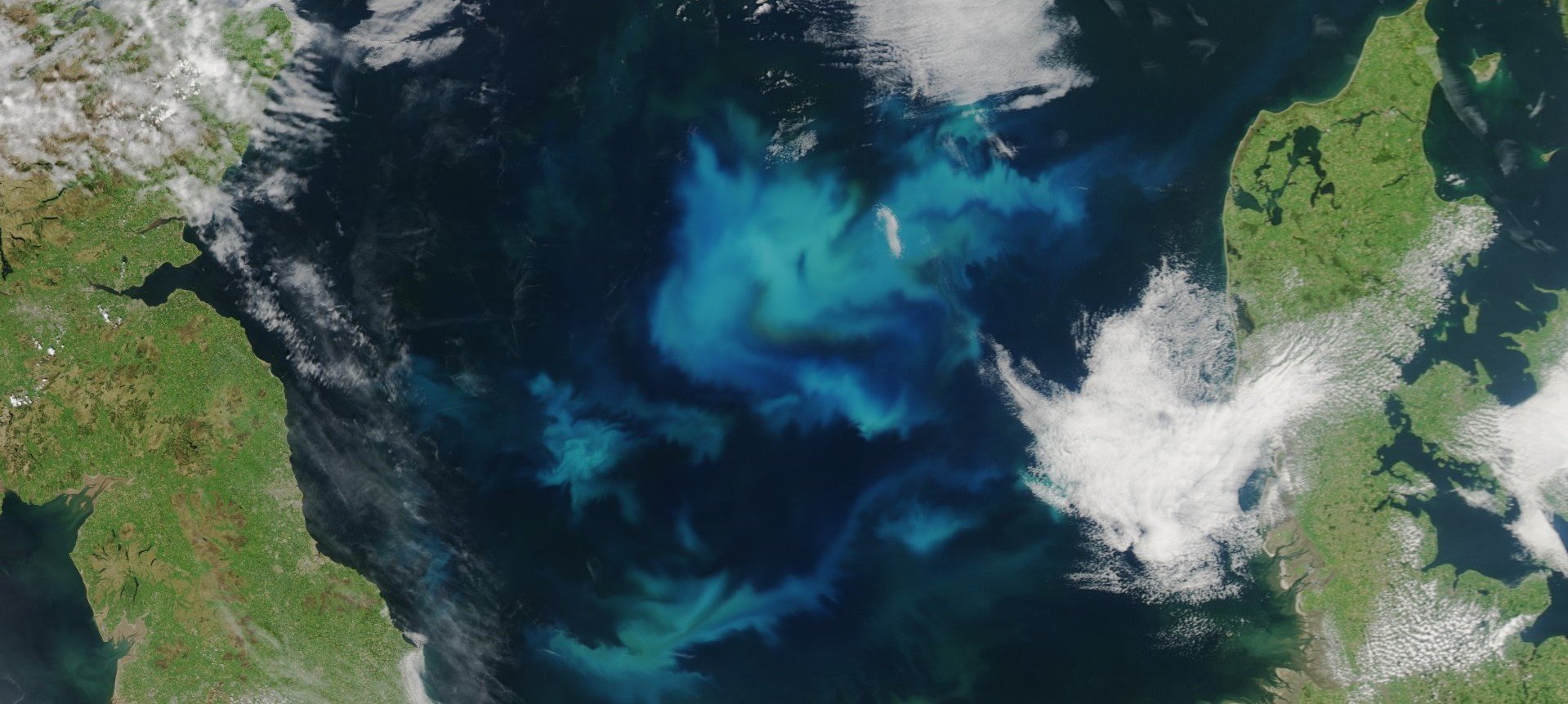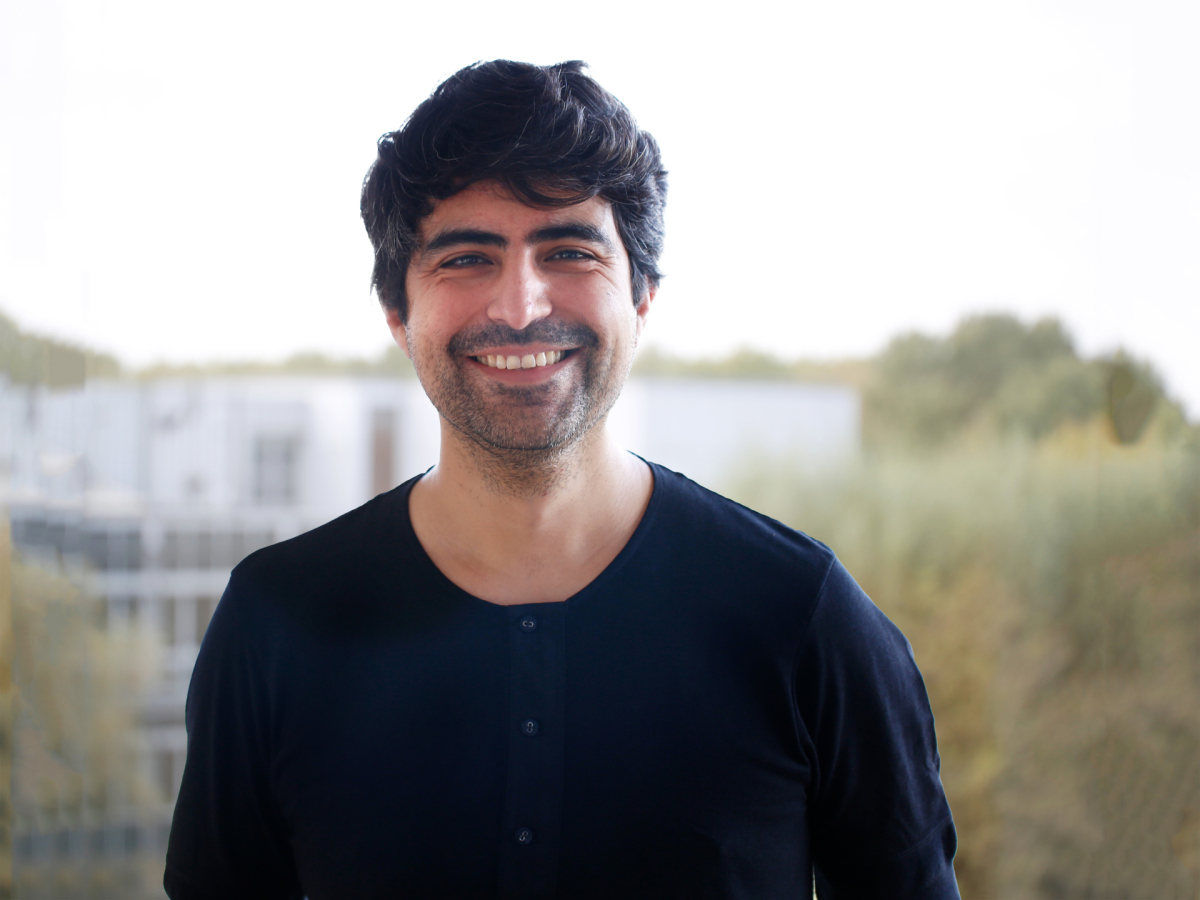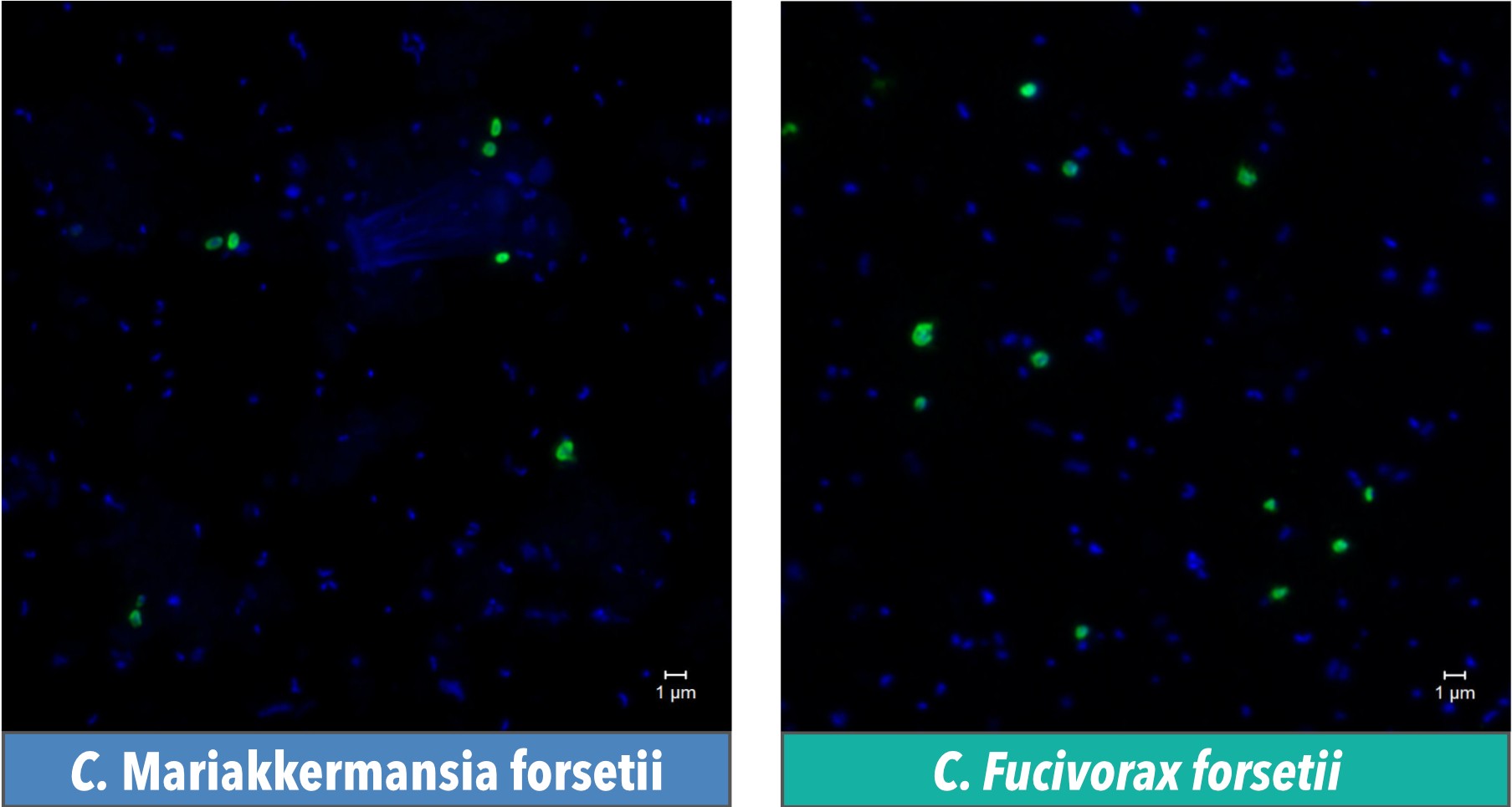- Press Office
- Press releases 2021
- Picky bacteria: Specialist consumers of tough algal sugars
Picky bacteria: Specialist consumers of tough algal sugars

Verrucomicrobiota are always there. This group of bacteria can be found in diverse habitats from soil to marine and fresh water and even in the human gut. However, they rarely come to the fore, rather they remain in the background. However, that didn’t stop Luis Orellana, a computational microbiologist at the Max Planck Institute for Marine Microbiology in Bremen, Germany, from noticing them in samples of North Sea water collected in the course of the annual spring bloom. Now he reveals that the Verrucomicrobiota take a very special role in the degradation of these algal blooms. Together with his colleagues, he describes his results in the ISME Journal.
Over the past few years, the annual and recurrent algal blooms in the North Sea have been one focus area of research at the Max Planck Institute for Marine Microbiology. Each spring, tiny algae grow in large numbers. After their demise, they release loads of sugar in the form of polysaccharides into the water – a feast for bacteria. Thus, the algal bloom is followed by a bloom of heterotrophic bacteria that specialize in consuming these freshly available polysaccharides. The bacteria remineralize the algal carbon, returning it to the atmosphere as carbon dioxide.
Previous studies from the Max Planck researchers revealed that the same specialized groups of bacteria prevail year after year. Amongst them, but not leading, are the Verrucomicrobiota. “Unlike other groups of bacteria, Verrucomicrobiota are strictly seasonal,” Orellana describes. “During the algal blooms we can detect specific species that we don’t see during the rest of the year – they seem to enjoy the food that blooms offer.”
Orellana and his colleagues investigated why that was the case. “We found that Verrucomicrobiota cells are highly specialized consumers of ‘hard to degrade' sugars – that is, polysaccharides containing sulfate and fucose.” Unlike other bacteria, which go for the easy-to-eat yummy algal remains, the Verrucomicrobiota prefer the tough stuff. They have it in them, as they have the necessary tools to degrade these algal components.
“Using metagenomics, metaproteomics, and cell visualization approaches, we found that Verrucomicrobiota use a combination of specialized pathways for fucose degradation,” Orellana continues. “When complemented with so-called bacterial microcompartments – organelle-like structures with a protein shell that functions as a container for storing toxic compounds –, this enables the bacteria to eat tough sugars and avoid the accumulation of toxic substances that are generated during the course of the meal.” These tough sugars might not be fully degraded and be part of the carbon that gets buried in the sediment for a long time, or remain within the dissolved fraction: The activity of Verrucomicrobiota could control the type of molecules that get sequestered within these carbon pools.
Orellana and his colleagues also named two new species of Verrucomicrobiota, calling them Candidatus Mariakkermansia forsetii and Candidatus Fucivorax forsetii. “In summary, it seems that being picky about what they eat (but being great at it) makes this group successful and recurrent every year during the spring blooms,” says Orellana.
Original publication
Luis H. Orellana, T. Ben Francis, Marcela Ferraro, Jan-Hendrik Hehemann, Bernhard M. Fuchs and Rudolf I. Amann (2021): Verrucomicrobiota are specialist consumers of sulfated methyl pentoses during diatom blooms. The ISME Journal.
DOI: 10.1038/s41396-021-01105-7
Behind the paper:
Participating institutions
Max Planck Institute for Marine Microbiology, Bremen
MARUM, Center for Marine Environmental Sciences at the University of Bremen
Please direct your queries to:
Group Leader
ERC Research Group for Ecological Genomics
Dr. Luis Humberto Orellana Retamal
MPI for Marine Microbiology
Celsiusstr. 1
D-28359 Bremen
Germany
|
Room: |
2226 |
|
Phone: |

Head of Press & Communications
MPI for Marine Microbiology
Celsiusstr. 1
D-28359 Bremen
Germany
|
Room: |
1345 |
|
Phone: |

